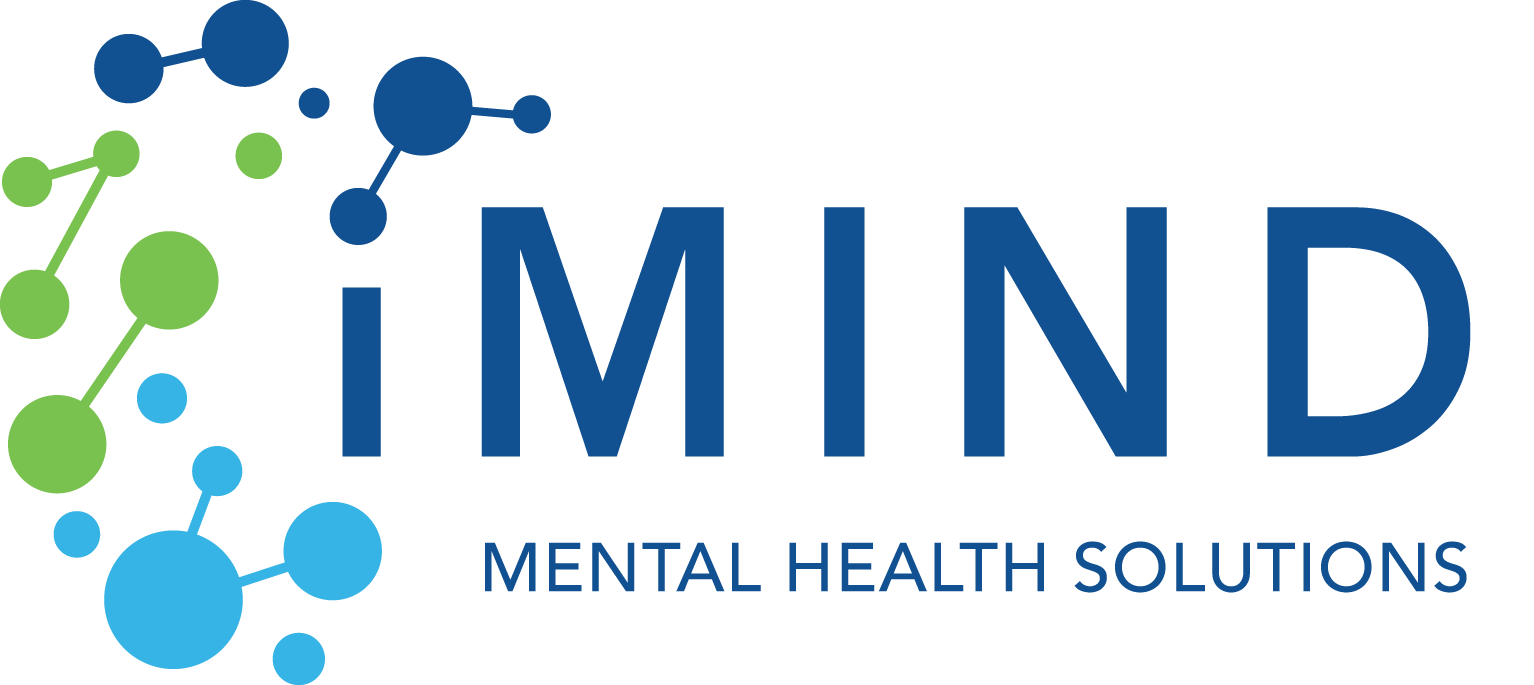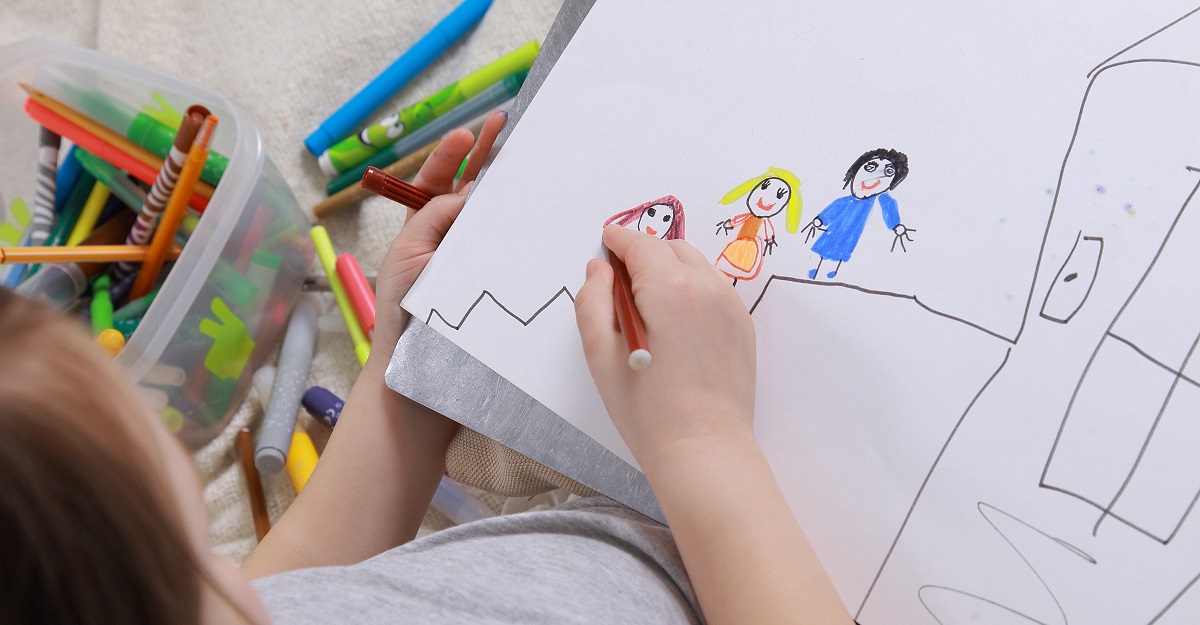Answers to the 10 Most Frequently Asked Questions About Therapy
iMind Mental Health Solutions Resource

In today’s rapidly changing world, the topic of mental health is on everyone’s mind and at the forefront of public conversation. Let’s take a look at the top 10 questions about therapy that we, as mental health providers, commonly receive. The answers not only boost understanding about mental health but also highlight the critical role therapy can play in it.
1. What is the difference between mental health and mental illness?
Navigating the world of mental health can feel like wading through a sea of terminologies. Two terms that often come up – and are sometimes used interchangeably – are “mental health” and “mental illness”. Let’s break them down to better understand their distinct meanings.
Mental Health: Think of mental health as akin to physical health. Just as our bodies require care, attention, and maintenance, so does the mind. Mental health refers to our cognitive, emotional, and social well-being. It influences our thoughts, emotions, actions, the way we handle stress, our interactions with others, and our decision-making process. A state of good mental health means we are able to realize our potential, work productively, cope with the everyday stressors of life, and contribute to our community.
Mental Illness: While everyone has mental health, not everyone experiences mental illness. Mental illnesses are conditions that affect a person’s thinking, feeling, behavior, or mood. These conditions can be occasional or long-lasting and can affect our ability to relate to others and function on a daily basis. Examples of mental illnesses include conditions such as major depression, anxiety disorders, bipolar disorder, borderline personality disorder, schizophrenia, and more.
An essential distinction between these two terms is that having poor mental health doesn’t necessarily mean one has a mental illness. Conversely, someone with a diagnosed mental illness can experience periods of strong mental health. Mental health exists on a spectrum, and we all fall at different points at various times in our lives.
Recognizing the difference between mental health and mental illness is crucial. It encourages us to prioritize our mental health daily, while also being kind and compassionate to those dealing with mental illnesses.
2. How do I know if I should see a therapist?
Periods of stress, sadness, grief, and conflict are common to us all. However, when these feelings persist, intensify, or hinder daily activities, it might be time to consider therapy. Signs include:
- Persistent feelings of sadness, anxiety, or emptiness
- Noticeable changes in sleeping or eating patterns
- A decline in performance at work or school
- Withdrawal from activities or hobbies you once loved
- Difficulty concentrating, remembering details, or making decisions
- A feeling of hopelessness or lack of purpose
- Thoughts of self-harm or harming others
While introspection and self-awareness are invaluable, remember that therapists have been trained to recognize patterns that you may not.
It is easier to address and manage concerns before they escalate. Just as with physical health issues, early detection and treatment are important. By seeking help early on, you are practicing proactive self-care and giving yourself the best chance of the most favorable outcome.
If you’re on the fence, even an initial consultation with a therapist can provide clarity.
3. Does therapy really work?
If you’re considering therapy, you might be wondering whether it is effective. “Does talking about my feelings truly help?” is a question many have asked. Science tells us that, yes, therapy works.
Research consistently shows that therapy can be incredibly effective in treating a range of mental health issues, from anxiety and depression to trauma and relationship problems. As well, many people who undergo therapy show better mental and emotional well-being than those who do not. They also display significant improvements in daily functioning.
According to the American Psychiatric Association, 75 percent of people who undergo therapy realize improvement in their symptoms. A Psychiatric Times study found brain changes due to therapy are on the same order as those induced by psychiatric medication. One form of therapy (cognitive behavioral therapy) is as effective at anxiety and depression symptom relief as anti-depressants.
In many cases, the benefits of therapy are found to be long-lasting, equipping individuals with the tools they need to handle future challenges.
4. How do I choose the right therapist for me?
Finding the perfect pair of shoes can be a challenge, right? Now, think about selecting a therapist —someone with whom you may share your deepest thoughts, fears, and aspirations. It is an intensely personal and significant decision. Here is a guide to help you find the right fit.
- Compatibility Matters. While credentials and experience are crucial, success hinges largely on your personal connection with the therapist. Do you feel heard, understood, and safe? It is okay to trust your gut feelings here.
- Specialization and Expertise. Just as doctors specialize in different areas of medicine, therapists often have areas of expertise. Whether you are dealing with trauma, anxiety, family issues, or any other concern, look for someone trained and experienced in that specific area.
- Recommendations and Reviews. Word of mouth can be invaluable. If you are comfortable doing so, ask friends or family for recommendations. Online platforms also offer reviews and ratings, but remember, therapy is deeply personal, and what works for one person might not work for another.
- Initial Consultations. Think of it as a “first date”. Many therapists offer initial consultations or introductory sessions. These are opportunities for both of you to gauge the fit. Feel free to ask questions about their approach, experience, or any other concerns you might have.
- Practical Considerations Don’t forget to consider logistics. Is their office accessible to you? Do they offer virtual sessions? Is their schedule flexible? What about fees and insurance compatibility? These factors can greatly influence your therapy journey’s continuity and comfort.
Remember, your well-being is invaluable, and you deserve a professional who aligns with your needs and goals.
5. What can I expect from my first therapy session?
Embarking on a therapeutic journey can evoke a mix of emotions – from eagerness to apprehension. If you’ve scheduled your first session and are unsure of what to expect, let’s demystify the process so you can proceed with confidence.
- Introductions and setting the tone. Your therapist will likely start by introducing themselves and creating a safe, welcoming environment. They will explain confidentiality, which ensures that what you discuss remains private, with few exceptions.
- Your story, at your pace. The initial session often revolves around understanding your reasons for seeking therapy. However, remember that you are in control. Share what you are comfortable sharing, at your own pace. There is no pressure to reveal everything in the first session.
- Therapeutic goal setting process starts. Your therapist might ask about your goals or what you hope to achieve. It is okay if you are uncertain. Part of therapy is clarifying these objectives. Whether it is better emotional balance, improved relationships, or specific behavioral changes, outlining these goals can guide the therapeutic process.
- Questions and clarifications. Feel free to ask questions. You can ask about the therapist’s approach, frequency of sessions, or any other concern you may have. Your understanding and comfort are paramount.
Your first therapy session is a foundational step. It’s about laying the groundwork, getting to know each other, and setting the stage for future exploration and growth. While the idea of starting therapy might seem daunting, remember that this is a space designed for your well-being, healing, and personal growth.
It is also natural to feel a range of emotions after the first session, from relief to introspection. Take some time to reflect on how you felt during the session. Did you feel a connection with the therapist? Was the environment conducive to sharing? Trusting your feelings is an integral part of this journey.
6. How is progress measured in therapy?
The markers of progress in therapy might differ from other tangible goals in our lives, like weight loss or academic achievements. So, how do therapists and clients gauge growth and change?
- Setting clear objectives. At the onset of therapy, you and your therapist will likely set specific goals, whether it’s managing anxiety, improving relationships, or building self-esteem. Periodic check-ins on these goals can offer a clear indication of progress.
- Gauging emotional states. One of the most evident signs of progress is a shift in your emotional state. Do you find yourself feeling more balanced, hopeful, or content? Your emotional well-being is a reliable compass pointing towards growth.
- Positive behavioral changes. Observable changes in behavior and daily routines can be strong indicators of progress in therapy. Perhaps you are adopting coping strategies during stressful situations, or maybe you are confronting scenarios you have previously avoided.
- A healthy feedback loop. Open communication with your therapist is essential. They might offer insights on your progress, but you should also not hesitate to share your perceptions and feelings about the journey as well.
- Increased self-awareness and insight. Gaining a deeper understanding of yourself, your patterns, and the reasons behind certain feelings or behaviors is a significant stride forward. This self-awareness often leads to more mindful decisions and healthier coping mechanisms.
- How new challenges are met. Facing challenges or setbacks does not negate your progress. Therapy is about teaching you how to navigate these obstacles and hurdles more effectively, not avoiding them altogether. Sometimes, recognizing and addressing a setback can be progress in itself.
Progress in therapy isn’t always linear; it is a blend of tangible and intangible indicators. Celebrate the small victories. Every step forward, no matter how minor it may seem, is a testament to your resilience and commitment to good mental health.
7. What if I feel like therapy isn’t working for me?
Doubt and uncertainty can be natural companions on any journey, and therapy is no exception. There might be moments when you wonder if therapy is benefiting you or if you’ve hit a plateau. Here’s what to do if you find yourself grappling with these feelings.
- Open dialogue is key. Before taking any steps, have an open conversation with your therapist regarding your worries. They are there to support you. Discussing your feelings with them can often shed light on potential reasons or pave the way for new therapeutic approaches.
- Re-evaluate goals. Sometimes, the initial goals set during therapy may need adjustment. As you grow and evolve, your objectives might shift, too. Periodically reassessing them can ensure you’re on a path that aligns with your current needs.
- Consider different modalities The world of therapy is diverse, with a range of therapeutic modalities and techniques. If one approach doesn’t resonate with you, there might be another that’s a better fit. For instance, if talk therapy feels stagnant, you might explore art therapy, group therapy, or mindfulness practices.
- Ask yourself if you’ve kept your end of the deal. Therapy is a two-way street. While it’s essential for the therapist to provide a conducive environment for growth, it’s equally vital for clients to commit to the process. This includes attending sessions regularly, completing any assigned tasks, and being open to introspection.
- Seek a second opinion. Just as you might with a medical concern, consider consulting another therapist for a second opinion. They might provide additional insights or recommend a different approach.
- Put feelers out for a therapist who may be more compatible with you. Just as in any relationship, the rapport between client and therapist is pivotal. If you feel the connection is lacking, it’s okay to consider seeing a different therapist. A fresh perspective might be what you need.
You may occasionally experience feelings of stagnation or doubt. This does not wipe out the work you’ve already done in therapy. Progress can sometimes be subtle, and growth often involves peaks and valleys. Stay patient with yourself, trust in the process, and make adjustments as necessary. This will help make your therapeutic journey as rewarding and enlightening as possible.
8. How do I balance therapy with my daily life?
Navigating the demands of daily life can be challenging on its own. When you add therapy into the mix, it can sometimes feel like another task on an already full plate. However, integrating therapy into your routine doesn’t have to be overwhelming. Here are some ways to find harmony between therapy and life’s many other commitments.
- Prioritize self-care. First and foremost, remember that therapy is an act of self-care. By attending sessions and working on your mental health, you are investing in your future and overall quality of life.
- Schedule wisely. Try to book therapy sessions at times that are the least disruptive to your routine. If you’re not a morning person, an early session might not be ideal. Conversely, after a long workday, an evening slot might feel draining. Know yourself and choose accordingly.
- Set boundaries. Let friends, family, and even coworkers (as appropriate) know you have a standing appointment. This can help reduce potential conflicts and ensure you have dedicated time for therapy.
- Digital options. Teletherapy or online counseling can be a convenient option, especially for those with packed schedules or transportation challenges. This approach allows you to engage in therapy from the comfort of your own space.
- Reflect and integrate. Instead of compartmentalizing therapy as a separate entity, try to integrate lessons learned into your daily life. This could be in the form of journaling, practicing mindfulness techniques, or simply taking moments to reflect on your day.
- Seek support. Share with close friends or loved ones about your therapy journey, if you feel comfortable. They can be a source of encouragement, understanding, and even logistical support, like helping with chores or childcare during your session times.
Therapy is a partnership between you and your therapist. It should enhance your life, not complicate it. Just a little bit of planning and flexibility can help. If you apply what you have learned in therapy to your life, you will reap its many benefits.
9. How do I know when it’s time to conclude therapy?
The idea of ending therapy can be both liberating and daunting. For many, therapy becomes a consistent and reassuring space for self-exploration and growth. So, how do you determine when the right time is to bid adieu? Here are some considerations and signs that might indicate you are ready to take this step.
- You have achieved your goals. The most apparent sign that you might be ready to wrap up therapy is when you have met the goals established at the outset. Whether it was managing anxiety, mending relationships, or building self-confidence, reaching these milestones can be an indication that therapy has served its purpose.
- Your coping mechanisms have improved. Over time, you might notice you’re handling life’s challenges with more ease and resilience. If you are consistently using the tools and strategies you have learned in therapy without frequently feeling overwhelmed, it might be a sign of readiness.
- You feel empowered. A sense of autonomy, where you feel in control of your emotions and decisions, is a powerful indicator. If you find yourself navigating life with increased confidence and less reliance on therapy sessions, it is a positive sign.
- Your therapist agrees it is time. Your therapist is your ally in this journey. Discuss your feelings about ending therapy with them. They can provide insights, help evaluate your readiness, and even suggest a tapering schedule if you both decide it is time to do so.
- You are willing to be re-evaluated in the future. Consider having periodic check-ins or booster sessions after concluding regular therapy. These can serve as touchpoints to ensure you remain on track and provide an opportunity to address any new concerns.
- You know that it is okay to return. Concluding therapy does not mean the door is permanently closed. Life has its ebbs and flows. If future challenges arise, or you simply feel the need for a refresher, it is entirely okay to seek therapy again.
Ending therapy is a big decision. It signifies a chapter of growth and introspection. However, it is essential to remember that everyone’s journey is unique. Some might find shorter therapeutic durations beneficial, while others might opt for long-term therapy. The key is making sure that the decision aligns with your mental health needs and life goals.
10. How can I maintain the progress I’ve made after therapy ends?
Closing the chapter on regular therapy sessions can evoke a mix of emotions. While it is a testament to the strides you have made, it can also bring forth concerns about maintaining that progress. Ensuring that the skills, insights, and growth achieved in therapy are sustained in the long run is paramount. Let’s explore strategies to keep you on a positive trajectory post-therapy.
- Establish a routine. The structure provided by therapy can be emulated in daily life. By setting a routine that incorporates self-care, reflection, and activities you enjoy, you can create an environment conducive to ongoing mental wellness.
- Continue learning. The world of mental health is vast and ever-evolving. Books, online courses, and workshops can be valuable resources to expand your understanding and introduce you to new coping mechanisms and perspectives.
- Join a support group. Online or in-person support groups can give you an outlet for sharing and advice as well as a sense of community. Surrounding yourself with individuals who understand your journey can be both validating and enlightening.
- Practice mindfulness. Techniques like meditation, deep breathing, and journaling can be instrumental in grounding you, managing stress, and promoting self-awareness. Make them a consistent part of your life.
- Set up regular check-ins. Periodically evaluate your mental well-being. This can be through solo reflection, discussions with loved ones, or even occasional sessions with a therapist to ensure you are on track.
- Stay physically active. Regular physical activity can significantly benefit your mental state.
- Seek feedback. Sometimes, those around you can offer insights into patterns or behaviors you might not readily notice. Trusted friends or family can be valuable mirrors reflecting your growth as well as areas that might need attention.
- Celebrate small wins. Recognizing and celebrating your achievements, no matter how minor, can boost your confidence and reinforce positive behaviors.
- Stay open to returning. Remember, revisiting therapy, if needed, is not a setback. Life changes, challenges arise, and we all need support from time to time. If you feel the need, it is okay to seek therapy again.
The end of therapy is not the end of your mental health journey. It’s a transition to a new phase where you take the driver’s seat, steering your life with the tools and knowledge you have acquired. With dedication, self-awareness, and continuous learning, you can ensure the progress made in therapy is not just maintained, but built upon.
Caring for your mental health is a deeply personal, continuously evolving journey. Therapy can be a transformative beacon to light your way. Each step, question, and insight brings you closer to better mental health and a brighter, more resilient future.
- Hainer, R. (2008, August 22). Is there proof that psychotherapy works? Retrieved September 1, 2014, from
- Chand, S. (2018, October 16). Criticism: Depression and Anxiety. Adaa.org.
- Interdimensional-r34. (2021, August 27). Reddit.com.
Latest News
-
Are We Overusing the Term Passive Aggressive?
Sometimes people might label behavior as passive-aggressive when it’s actually just indirect communication or avoidance of confrontation. Overusing the term can dilute its meaning and make it less effective in addressing genuinely passive-aggressive behavior.
-
Top 10 Questions About Art Therapy for Mental Health
Art therapy has recently gained recognition for its unique blend of healing therapy and personal expression. Despite its growing popularity, there seems to be some misunderstanding about what art therapy entails, who it can benefit, and how it differs from other forms of therapy.



